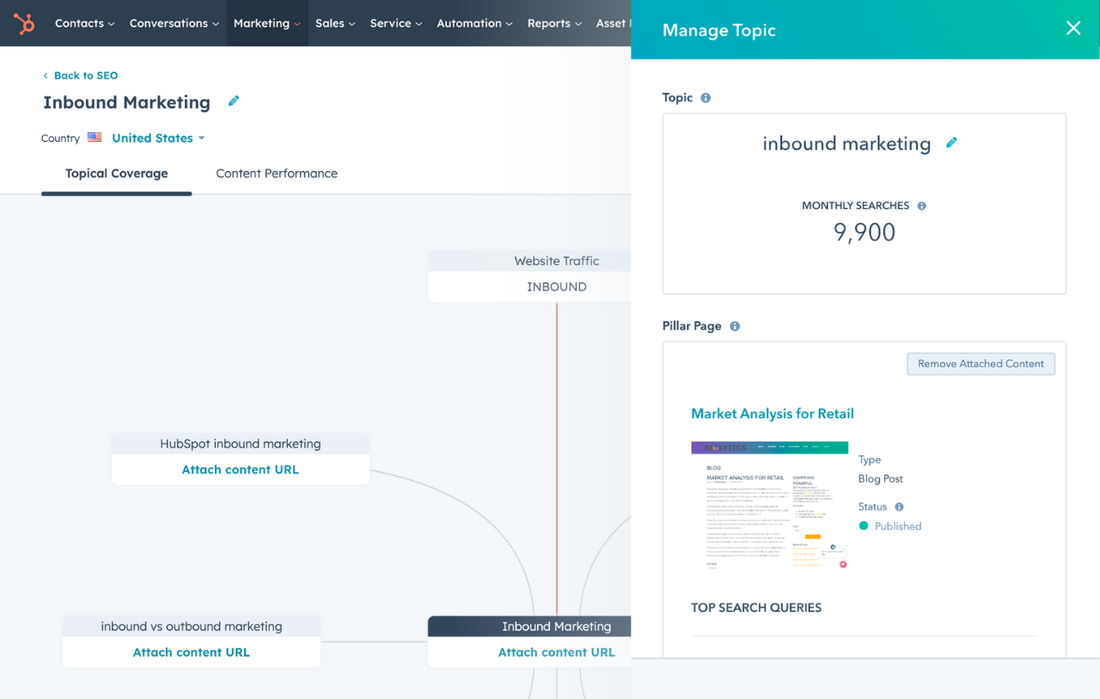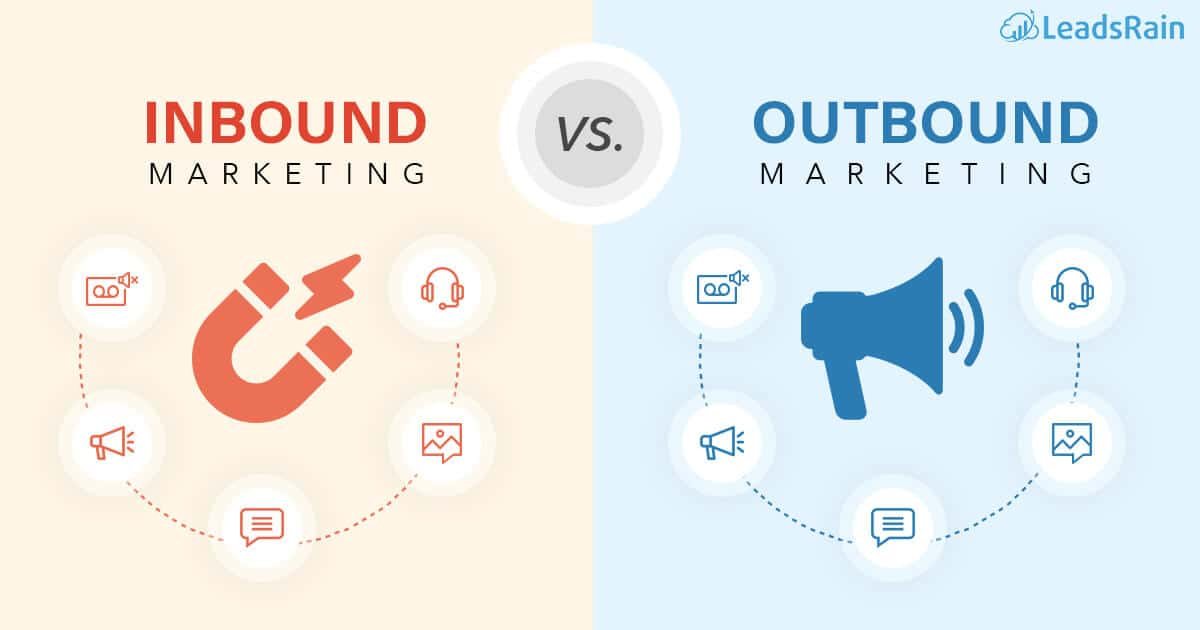Marketing: Inbound vs. Outbound
What is inbound marketing and outbound marketing?
- Inbound marketing is the strategic way to build content that aligns with the needs of your prospects so that they reach you on their own.
- Outbound marketing involves you proactively reaching out to potential clients to gain interest in your products or service.
With a more conventional approach to marketing, outbound marketing pushes messages out to prospective customers and clients. The term “outbound marketing” can be the most defined by practices such as cold phoning, email blasts, outsourced telemarketing, trade events, seminar series, etc…
As part of an inbound marketing strategy, content is developed and social media tools are used to raise brand recognition. As a result, more people will become aware of you, visit your website for details, express interest in your goods, and possibly buy them.
Every successful marketing strategy will contain one or both of these methods. While outbound may be more immediate in terms of execution and results, inbound takes carefully curated strategy and time to create the content fitting for your prospect's place in the funnel, test it out, and see what works best to bring in new leads.
So why inbound marketing?
Inbound marketing is known as a more genuine way of interacting with and gaining customers. Once you build a winning strategy, you have the content and structure to win your leads over in a more ‘organic’ way. It’s all about who you reach and the method in which you do it. This type of marketing contains a large range of methods including:
- Blogs
- Social media
- Opt-in emails
- Newsletters
- Influencer outreach
- Social media
- Ebooks
- Video content
- Infographics
- Podcasts and webinars
- Research reports
- Affiliates
- Press releases
- SEO and PPC
- Etc…
Inbound marketing can be applied to B2B marketing strategies as it works to build crucial intimate relationships with customers while simultaneously nurturing them through every phase of the buyer’s journey.
Outbound tactics allow you to directly contact an audience of people who you can easily qualify as a prospect or lead, but as your potential client’s inbox is flooded by cold outreach it’s getting harder and harder to stand out and actually capture their attention. By building a successful inbound funnel, your leads will engage in your content, draw the conclusion on their own that your solution suits their needs, and reach out for easier conversion.
The Transition from Outbound to Inbound Marketing
Inbound marketing is the ideal method as it allows you to make yourself more visible to people already interested in your business instead of performing outbound marketing to the millions of people trying to block you out.
To accomplish this, you must set up your website to function as a "hub" for your sector. A website that naturally draws visitors due to search engines, blogging, and social media.
The “Attract, Engage, and Delight” methodology will help do this crucial step.
To attract an audience, develop a strong content strategy.
For each level of the marketing funnel, you want to have content. Social media and advertisements are excellent ways to introduce users to your brand and product for consumers in the awareness stage.
By blogging with a strong SEO plan, you'll establish yourself as an authority figure in your field and make it easier for people to find you as the search engine is optimized in your favor.
Once website visitors turn into leads, tools such as email marketing and automated workflows will help maintain these numbers.
The “Delight” stage ensures that your audience can quickly and easily engage with your sales and service staff.
In summary, inbound marketing is all about meeting your audience where they are.
HubSpot Inbound Marketing Methodology
HubSpot is built to support your inbound marketing. With tools to manage your social media, ad campaigns, landing pages, blog posts, email marketing, and newsletters, with Marketing Hub, you’re set up for inbound success... HubSpot even offers a free course to earn an Inbound Marketing Hubspot certification. In the course, you can learn about the inbound methodology and how to use HubSpot tools to map out the buyer’s journey and engage prospects at every step of the way.

Working with HubSpot’s Marketing Hub and CRM software doubles your efficiency as you can follow leads from marketing to sales, see which sources and campaigns close the most deals, and double down your effort on those channels.
Having the right software is crucial in answering the question of how to increase and generate inbound leads. It does so by automatically tracking all customer interactions, managing up-to-the-minute views of an entire sales funnel, and storing all leads into a neat timeline.
Our team at ScaleOps maximizes these resources for our clients by setting up and optimizing HubSpot to support their inbound and outbound marketing. We have experience assisting with any step from starting and maintaining the process, to all the work that goes into the crucial data collected including training of teams to take over the process.
Sound like something that could be helpful to your company? Book a time with us here to see how we can help!


.png?width=80&name=photos%20team%20(8).png)
Comments